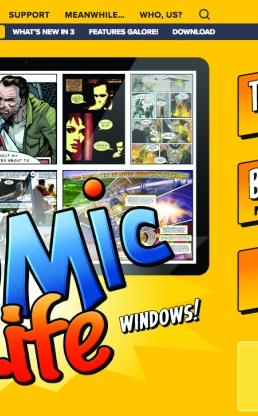
One of the most powerful ways we communicate is by telling stories. Storytelling is primal, beginning with the oral tradition, continuing through the written word, and then through sound, pictures, film and now online media. Digital storytelling is a way of using technology resources to write and design a narrative and then share those stories with others.
Though digital storytelling is most obviously a literacy tool, it can be applied across the curriculum. Students can use digital storytelling tools to write an account of a historical event in the voice of a bystander, present a murder mystery that requires math to find and solve clues, explain a scientific discovery from the point of view of an inventor, tell the story behind a piece of artwork or musical composition, or compose a story in another language (with subtitles if desired). Within English language arts, the possibilities are nearly endless — personal memoirs, creative writing, persuasive essays and writing in the voice of a character from literature are just a few.
There are almost as many methods to tell a digital story as there are stories themselves. You can use video, a blog, a slideshow, a podcast or a specialized app, such as those below, made expressly for this purpose.
BookCreator ($4.99 in the iTunes store) is an iPad app that is essentially a multimodal ebook creator. It’s easy enough for young children to use and has sophisticated features that make it attractive to older students as well. You can add text, images, video, your own drawing, voice and music to create and enhance your story. Once you complete your story, it’s easy to share it — you can download it as an ePub file, a PDF or a video file.
ComicLife (iPad app: $4.99; software for Mac or Windows: $19.99 for a single license for educators) is well known as a digital comic-strip creator; in fact, many city DOE computers pre-install the software. Comic strips, because of their popularity, are highly motivating for many students, and they are an excellent medium for storytelling. ComicLife looks so professional that many educators are intimidated by it, but it’s actually pretty easy to use. Choose a template/style for the comic, insert images of your choice, add your text and speech boxes, add special effects well known to comic lovers, and then export your creation to a format of your choice to share. The software also makes stories easy to print and display in your classroom.
Puppet Pals is an iPad app that looks like a simple program for young kids (and it can be), but I’ve used it many times with my high school students because of its powerful features. You design a story making the same decisions as an author: You choose a setting, select characters and then add the action and dialogue by recording your own. You can use the characters provided or insert your own pictures — you can even insert yourself into the story. The finished project looks like a movie, but it’s entirely of your own design. The app is free, but you can purchase additional character and setting packs once you download it.
High quality digital stories can be crafted using basic resources already in use at your school. Ensure that your students script and plan their stories first before turning to technology. The story itself should always come before any bells and whistles.
Sandy Scragg is an instructional technology specialist with more than 15 years of experience in New York City public schools.